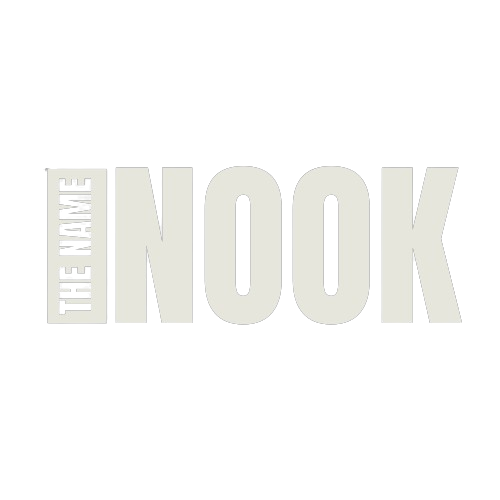The question of whether the plural form of “software” is “software” or “softwares” often confuses English speakers. In this article, we’ll explain the meaning of the word, how to pluralize it, and provide examples to clarify its usage. By the end, you’ll have a clear understanding of the topic.
What Does the Word “Software” Mean?
“Software” is a general term that refers to a collection of programs, data, and instructions that tell a computer how to perform specific tasks. It’s a crucial part of the technology we use every day, from operating systems to mobile apps.
Types of Software
- System Software: This includes operating systems like Windows or macOS that manage both hardware and software resources.
- Application Software: These are programs such as Microsoft Word or Adobe Photoshop that help users perform specific tasks.
- Utility Software: These are tools that assist in managing, maintaining, or controlling computer resources, such as antivirus programs.
Understanding these types of software will help clarify our discussion on the plural form of the word.
Plural of “Software”: Software or Softwares?
When it comes to the plural of “software,” the answer is simple: it’s just “software.” While many English nouns form their plurals by adding an “s,” “software” is a mass noun. This means it refers to something that cannot be counted individually.
So, despite the instinct to add an “s,” “software” stays the same whether you’re talking about one program or multiple.
Why is This Important?
Understanding that “software” is a mass noun helps clear up its proper use. Just as we don’t say “furnitures” or “informations,” we also don’t say “softwares.” Mass nouns refer to a whole or substance that can’t be counted individually, which is key for effective communication.
Other Nouns Like “Software” and Their Plurals
To better understand how mass nouns work, let’s look at other examples that follow the same pattern:
- Furniture: Stays “furniture” no matter how many pieces you have.
- Equipment: Always “equipment,” whether you have one item or several.
- Luggage: Referred to as “luggage,” whether you have one bag or more.
Characteristics of Mass Nouns
- Indivisible: Mass nouns can’t be counted as separate units.
- Collective: They refer to a group or substance as a whole.
This is why “software” behaves the way it does.
Origins of the Word “Software”
The word “software” first appeared in the late 1950s, coined by mathematician John Tukey. It combines “soft,” suggesting flexibility, and “ware,” meaning goods or items. This term marked a shift in technology as computers became essential in daily life.
The Evolution of Software
Over time, the definition of software has broadened to include various categories, reflecting technological advancements:
- Embedded Software: Found in devices like cars or appliances, controlling specific functions.
- Cloud Software: Programs hosted online, accessible from anywhere with an internet connection.
These categories help us better understand the term “software” and its importance in today’s digital world.
Can “Softwares” Be Used as the Plural of “Software”?
Although you might hear “softwares” in casual conversations, it’s generally considered incorrect in standard English. The confusion often comes from trying to apply regular plural rules, but mass nouns don’t follow that pattern.
Common Misconceptions
Some people argue that since we say “hardwares,” we should be able to say “softwares” as well. However, it’s important to note that “hardware” and “software” are treated differently. While “hardware” can sometimes be pluralized, “software” doesn’t follow the same rule.
Examples in Context: Singular and Plural
Let’s look at some examples to better understand how “software” works in both singular and plural contexts.
Singular Usage (“Software”)
- “I installed new software on my computer.”
- “This software helps manage our finances.”
Plural Usage (Alternatives to “Softwares”)
Instead of saying “softwares,” here are some alternatives to express multiple types of software:
- “There are various types of software available for purchase.”
- “Many software applications can enhance productivity.”
Contextual Clarity
When talking about multiple software options, clarity is essential. Instead of using “softwares,” try phrases like “different software applications” or “a range of software solutions.” This keeps your language accurate and adheres to grammatical standards.
Possessives and Software
Using possessives with “software” can further refine your writing. Possessives show ownership or relationships, and the rules for forming them depend on whether the noun is singular or plural.
Examples of Possessives:
-
Singular Possessive:
“The software’s interface is user-friendly.”
(The interface belongs to the software.) -
Plural Possessive:
“The software developers’ contributions were invaluable.”
(The contributions belong to multiple developers.)
Guidelines for Forming Possessives:
- Singular Nouns: Add an apostrophe and “s” (e.g., software’s).
- Plural Nouns Ending in “s”: Add only an apostrophe (e.g., developers’).
- Plural Nouns Not Ending in “s”: Add an apostrophe and “s” (e.g., children’s).
Examples in Context:
- Singular: “The software’s capabilities have expanded significantly.”
- Plural: “Many software companies’ products have revolutionized the industry.”
The Wrap-Up: No Need for “Softwares”
In conclusion, the plural form of “software” is simply “software.” Recognizing this helps avoid common errors and ensures clear communication.
Final Thoughts
Language can be tricky, but understanding these small details improves how we express ideas. Remember, when in doubt, always use “software” for both singular and plural.
Summary Table
| Topic | Details |
|---|---|
| Meaning of Software | Refers to programs and data that instruct a computer on how to perform tasks. |
| Types of Software | System software, application software, utility software. |
| Plural Form | The plural of software is software. |
| Mass Nouns | Indivisible nouns that refer to a collective whole (e.g., furniture, equipment, luggage). |
| Origins | Coined by John Tukey in the late 1950s, combining “soft” and “ware.” |
| Misconceptions | “Softwares” is generally considered incorrect in standard English. |
| Possessives | Form possessives by adding apostrophes appropriately (e.g., software’s, developers’). |
| Conclusion | Always use “software” for both singular and plural forms to maintain grammatical correctness. |
Sources:
- Merriam-Webster Dictionary
- Oxford English Dictionary
- Cambridge Dictionary
By understanding the nuances of “software” and its pluralization, you’ll improve your communication skills and engage more effectively in tech discussions.


1 thought on “Top 5 Best What’s the Plural of Software? Is it Software or Softwares?”